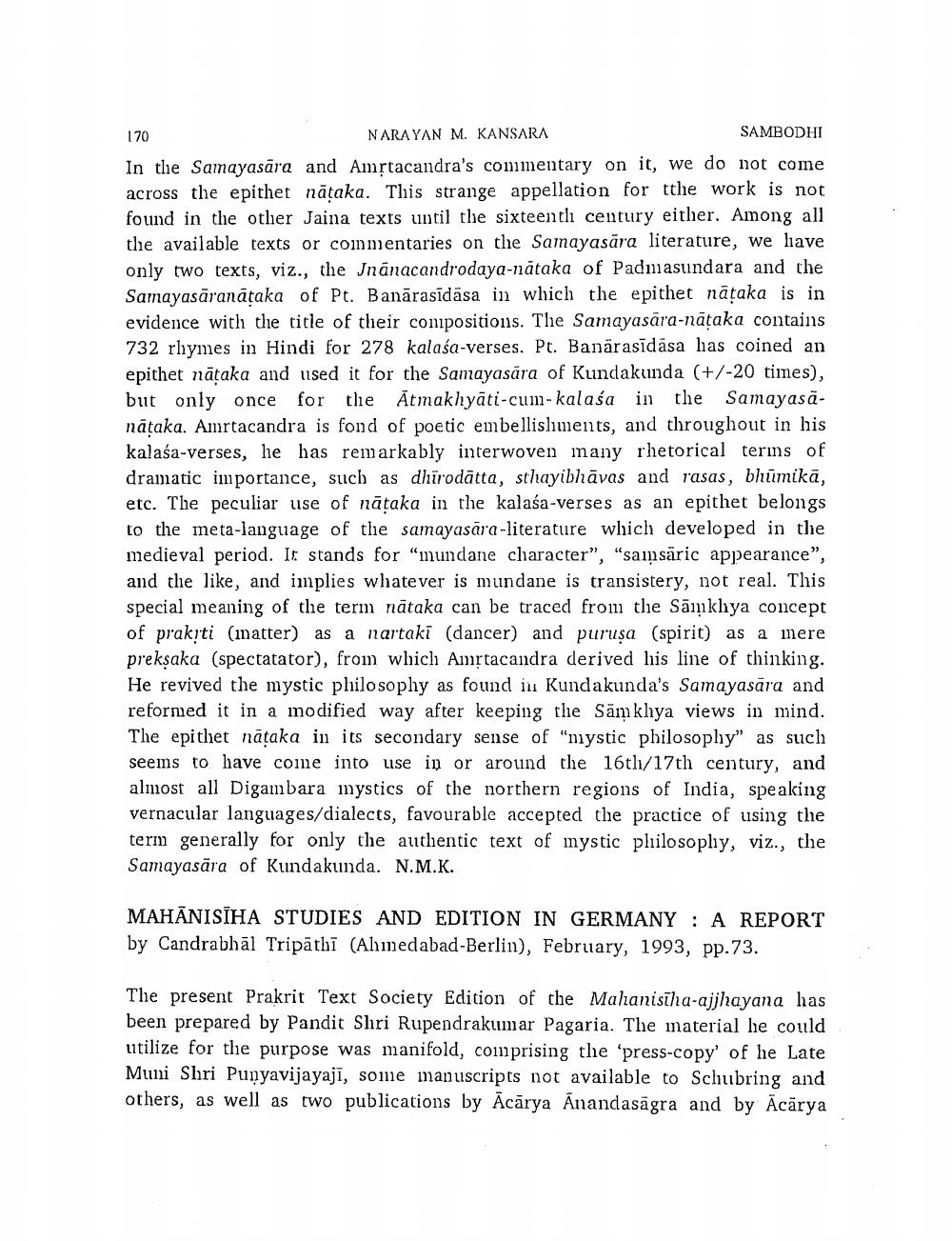________________
170 NARAYAN M. KANSARA
SAMBODHI In the Samayasara and Amộtacandra's commentary on it, we do not come across the epithet nātaka. This strange appellation for tthe work is not found in the other Jaina texts until the sixteenth century either. Among all the available texts or commentaries on the Samayasāra literature, we have only two texts, viz., the Jnanacandrodaya-nātaka of Padmasundara and the Samayasāranātaka of Pt. Banārasīdāsa in which the epithet nātaka is in evidence with the title of their compositions. The Samayasara-nataka contains 732 rhymes in Hindi for 278 kalasa-verses. Pt. Banarasīdāsa las coined an epithet nātaka and used it for the Samayasära of Kundakunda (+/-20 times), but only once for the Atmakhyāti-cum- kalasa in the Samayasanāțaka. Amrtacandra is fond of poetic embellislıments, and throughout in his kalasa-verses, he has remarkably interwoven inany rhetorical terins of dramatic importance, such as dhirodātta, sthayibhāvas and rasas, bhumikā, etc. The peculiar use of nāțaka in the kalasa-verses as an epithet belongs to the meta-language of the samayasara-literature which developed in the medieval period. It stands for "mundane character", "samsaric appearance", and the like, and implies whatever is mundane is transistery, not real. This special meaning of the term nātaka can be traced from the Sāmkhya concept of prakti (inatter) as a nartaki (dancer) and purusa (spirit) as a inere preksaka (spectatator), from whichi Amrtacandra derived his line of thinking. He revived the mystic philosophy as found in Kundakunda's Samayasara and reformed it in a modified way after keeping the Samkhya views in mind. The epitliet nāțaka in its secondary sense of "mystic philosophy" as such seems to have come into use in or around the 16tlı/17th century, and almost all Digambara mystics of the northern regions of India, speaking vernacular languages/dialects, favourable accepted the practice of using the term generally for only the authentic text of mystic philosopliy, viz., the Samayasära of Kundakunda. N.M.K.
MAHĀNISĪHA STUDIES AND EDITION IN GERMANY : A REPORT by Candrabhāl Tripāthī (Ahmedabad-Berlin), February, 1993, pp. 73.
The present Prakrit Text Society Edition of the Malanisiha-ajjhayana has been prepared by Pandit Shri Rupendrakumar Pagaria. The material lie could utilize for the purpose was manifold, comprising the 'press-copy of he Late Muni Shri Punyavijayajī, some manuscripts not available to Schubring and others, as well as two publications by Ācārya Anandaságra and by Äcārya




